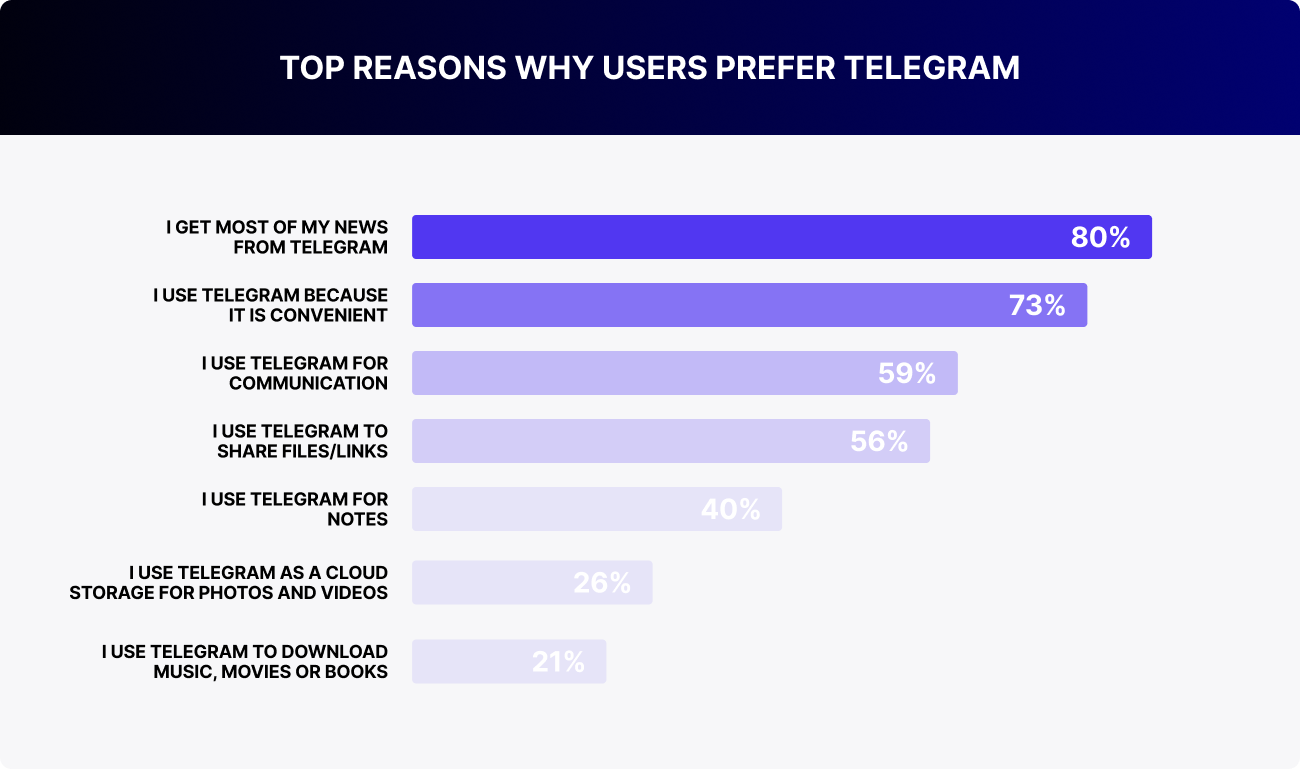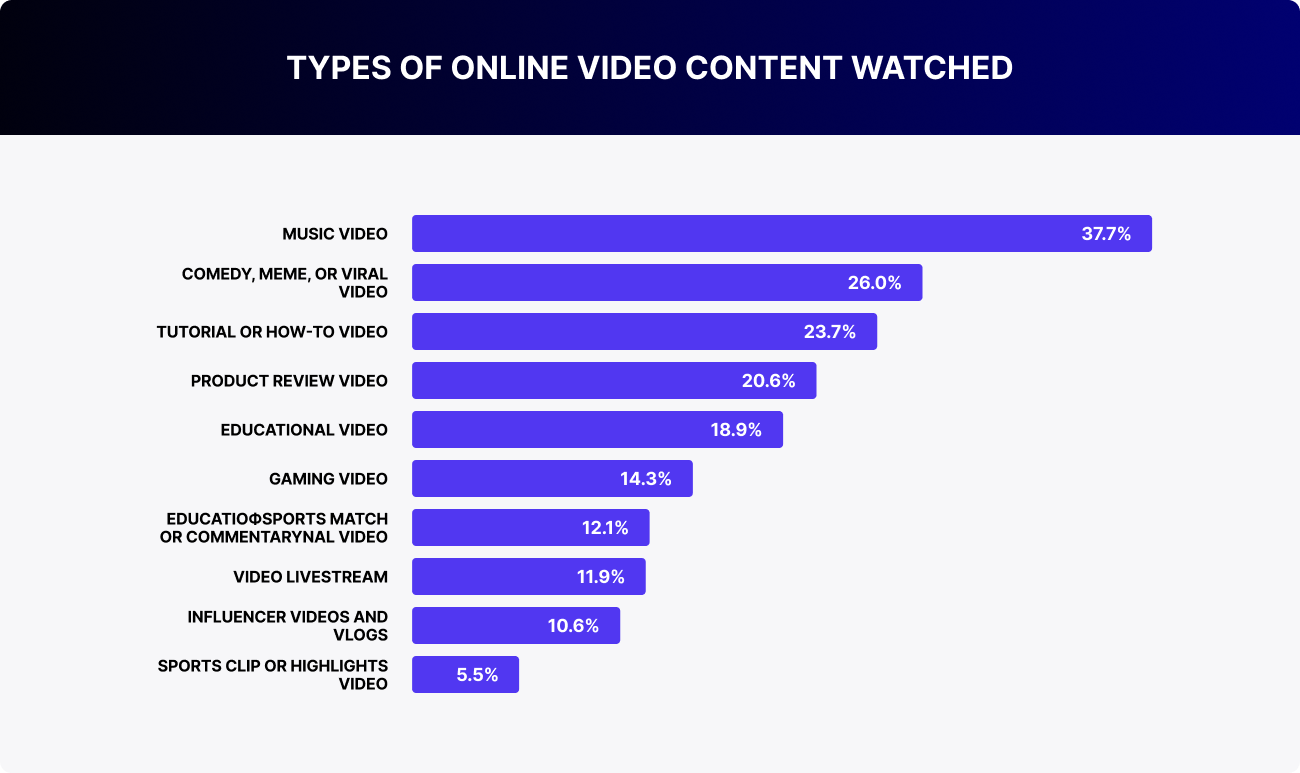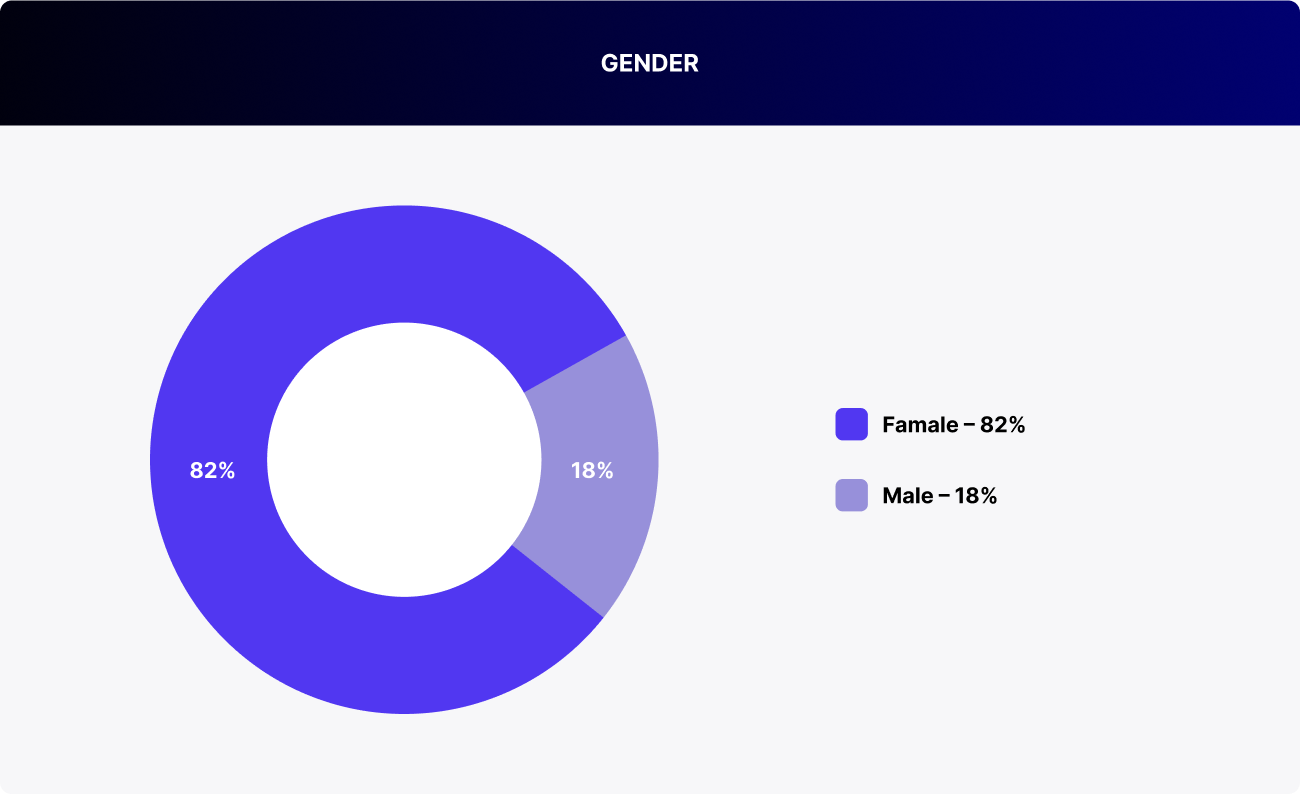Blog about successful marketing strategies in russia
Russian Social Media Marketing: Key Platforms for Effective Campaigns


DIGITAL MARKETING
Share this Post
Modern Russian social networks are becoming full-fledged aggregator services, offering users a multitude of functions and opportunities. Each site has its own audience. To run effective advertising, you need to know where your content will produce the best results.
From the perspective of influencer marketing, the number of Russian-speaking content creators on social media reached 74.9 million by the end of 2024. Some resources are gaining popularity, while others are losing users. VKontakte is the clear leader in the number of content creators in Russia, with 24.88 million authors publishing posts every month. In the first months of this year, 641 thousand people came to the social network. In contrast, Instagram has already lost 62% active users.
Telegram's audience has grown significantly in recent years, with a "cosmic" leap of +18 million people in just two years. On As of April 4, 1.2 M channels were recorded in the messenger, and the total number of users reached 4 950 920 000 people.
In addition to this, YouTube and Odnoklassniki - the platforms with a stable base of loyal users — maintain their influence. YouTube remains the primary video platform despite restrictions, while Odnoklassniki continues to hold strong among the older generation of Russians, particularly in the ‘home’, ‘family’, and ‘useful content’ categories.
Let's dive deep into Russian social media and explore how brands can make the most of it.
Telegram
Telegram is the leader of the Russian digital space in 2025. The platform is actively used by 78.3% of all internet users in the country, second only to WhatsApp in reach. The majority of the audience consists of adults over 25, with strong activity in the 25-44 age group.

Despite the growth in features, Telegram remains a messaging app at its core. But this is precisely what makes it a unique advertising platform as users perceive content here as a personal message, rather than background noise in a news feed.
SMM approach for Telegram
The messenger remains a platform where content is truly read, not just skimmed through. However, promotion here requires patience: a channel doesn’t gain subscribers overnight. It’s not about organic traffic, but about a well-planned strategy and ongoing engagement with a loyal audience.
Express instructions on how to launch a Telegram channel:
- Telegram does not provide random traffic. A channel is built on understanding: who this person is, what their pain points are, what can engage them, and why they will stay.
- Positioning Choice. The channel must convey a specific expertise. For example, financial services — case studies, travel — guides and life hacks, e-commerce — product selections and new arrivals.
- Content Plan. Posts should be organized into series, with a mix of formats (text, video, polls). Users in Telegram don’t scroll endlessly — they come for specific value.
- Promotional Launch. In 2025, promotion is based on three tools: - seeding (via aggregators or manually), -native advertising with influencers, - Telegram Ads (reaching up to 50% of the target audience, depending on the topic).
- Retention. Content is published regularly. Topics with the highest engagement are tracked. Reactions, comments, visual anchors, and introductions are used. The goal is not just to inform but to create a habit of reading.
- Development. The channel undergoes a review every 2–3 months. Reach, reading depth, engagement, and churn are analyzed. Competitors are compared: post frequency, format, and subscriber activity. The structure is adjusted, weak topics are excluded, and formats with high response rates are strengthened. Based on the data, a new content cycle and media plan are created.
Promotion on Telegram will be most effective for those niches where you can generate interesting, useful, or news content. Since there is no user feed in Telegram, all posts, audio, and videos can be seen only by entering the channel. The amount of attention per unit of content is minimal. To succeed, you must ensure your audience actively seeks out your content and is eager to read it. With this axiom in mind, you must proceed with planning the creation and development of the channel.
Telegram works well for brands that can regularly provide useful and timely information. This is especially relevant in industries with a high level of inquiries and instability, such as travel.
For example, the Aviasales channel (256,000 subscribers) doesn’t just post visa and discount information. The content revolves around everyday travel situations: what to pack for a trip, how to behave at the airport, which flights are canceled, and where new destinations have opened. Periodically, light entertainment posts, tips, and checklists are included.
How to gain an audience on the Telegram channel
Posts in public channels are the best format for advertising. They have their own specifics, though. To interest the consumer, an ad has to be replaced by new publications within 24-48 hours. Choose your target channels wisely, selecting from a database of relevant topics and crafting the content of your post with care.
Promotion in Telegram can be divided into three main directions:
-
Seeding in other channels (in the form of an advertising post with manual selection or launch through Yandex.Direct).
-
Native advertising in the channels of opinion leaders.
-
Launch of paid social via Telegram Ads.
In just three quarters of the past year, the turnover of advertising posts on channels reached 6.5 billion rubles, with the market adding another 25% in the second quarter alone. Such growth speaks for itself: interest in the platform remains consistently high, and advertising placements are becoming more effective.
Over the course of six months, 18,515 channels released at least one integration, and the number of advertisers approached 27,000. The total reach was 3.6 billion views, with engagement holding steady at 20%. The average CPM is 1,850 rubles (≈ $19.47), and CPC is 47 rubles (≈ $0.49).
The largest budgets were allocated to topics that traditionally attract audiences: technology, beauty, clothing, finance, online education, and psychology. These areas accounted for two-thirds of all advertising spending, and this is quite understandable. These niches compete fiercely for attention, and Telegram allows messages to be delivered quickly and directly to subscribers without unnecessary noise.
An additional boost came from Telegram Ads. By the end of the year, the number of campaigns launched increased sevenfold, from 9,000 in January to 70,000 in December. In total, over 470,000 placements were launched in a year. The key drivers were new visual formats and the ability to target accurately based on big data.
In 2025, Telegram is a fully-fledged advertising ecosystem where reach, engagement, and algorithms all work together.
Despite the growth of Telegram Ads, the primary and most in-demand advertising format remains native placement with channel owners. Telegram Ads are used by 58% of respondents, while Telegram Premium is used less frequently by advertisers. We have written earlier in detail about the formats of advertising integrations on Telegram.
Telegram users are most interested in blogs, news, and media, the 18+ category, sales, as well as humor and entertainment.
VK
At the end of 2024 and the beginning of 2025, the social network VKontakte (VK) continues to hold a leading position in the Russian internet segment. Last December, VK’s monthly audience in Russia reached 92 million users, which accounts for about 76% of the country’s population.
The most active users are in the age groups of 35-44 years (29%) and 25-34 years (23%)
After the exit of foreign advertising platforms, VK became one of the main hubs for businesses. According to data from the previous year, revenue from online advertising grew by 47% in 2023, and continued to rise in 2024 due to the demand for educational solutions and business technologies. The company identified demand for educational services and business technologies as its primary growth driver.
SMM approach for VK
SMM strategies for brand promotion in VK revolve around creating a community within the social network.
How Brands Design Communities on VK
VK is a platform for sales. The main focus is not the design, but how quickly a person can find the necessary information and understand why they should subscribe.
- It’s better to use a key product or unique selling proposition (USP).
- A cover and a community icon. They serve as a banner: visually stand out and set the mood. Seasonal banners or visual highlights of promotions are commonly used.
- A brief answer to three questions: Who are you, what do you offer, how to buy. Key information should be placed above the fold.
- Navigation. The pinned post should include instructions, special offers, and the starting selection. The ‘quick’ buttons should link to ordering, the catalog, and contacting the manager.
- Product cards. Add product images to your community's online storefront so customers can purchase their favorite products immediately.
VK suits most brands because the platform is flexible and adapts to various niches.
Both mass categories — retail, food, travel — and local, B2B, and niche projects thrive here. Unlike other social networks, VK is not limited to just one format: you can run a storefront, build a community, promote products through content, or directly drive traffic to a landing page.
The platform provides tools for any goal: sales, reach, engagement, and retargeting. The strategy is built around audience behavior: how they live, how they make decisions, and what they expect from a brand.
For instance, the official VK community of the Genshin Impact game with 1.4M subscribers has successfully promoted its brand through communication with users, publishing updates and new characters, as well as posting content in the style of the game. One such example is an April Fools' post featuring the character Pyro-Beef: the video generated a strong response and sparked discussion in the comments.
How to gain an audience to the VK Community
VK is a platform where organic growth is almost impossible without investment. Followers are driven through targeted advertising, influencer placements, interactive content, and special projects. Each format has its own purpose: targeting provides reach, influencers build trust, and contests increase engagement.
VK Ads is the primary tool for launching campaigns. Campaigns are tailored to specific goals: traffic, subscriptions, and engagement. Supported formats include video, carousels, stories, and posts with buttons. The system allows for testing creatives and segmenting the audience by interests, actions, geography, and even previous activity in the community.
Meanwhile, influencer platforms, VK Clips, and gamification in the messenger work in parallel. All of this is part of the ecosystem, where the user can seamlessly transition from a video to a purchase with just a couple of taps.
You can read more about running paid social through VK Ads here.

Separately we should mention advertising in VK clips - an endless feed with short vertical clips.
YouTube
YouTube remains one of the largest video platforms in Russia, but over the past year and a half, it has come under pressure: due to political decisions and restrictions imposed by authorities, the service is no longer a neutral platform. This has affected both the audience and the behavior of content creators.
In December 2024, YouTube's monthly audience in Russia amounted to 89.6 million people, 6% less than at the end of the year before last. The daily audience saw a particularly sharp decline: from 52 million in August to 29 million in February 2025.
The number of active creators also decreased: in October, there were 4.7 million, which is 34% fewer than the previous year. Among those who continue to work on the platform, the majority are men (63.9%), while on Instagram, women dominate (81% of creators).
Nevertheless, YouTube remains an important tool for video marketing, especially in niches where explaining, demonstrating a product, or evoking emotions is necessary. However, under the new conditions, brands must act more cautiously: selecting creators with verified audiences, fine-tuning the presentation format, and constantly adapting to the changing environment.
Read our in-depth article about popular Russian video bloggers to discover more.
SMM approach for YouTube
Despite the growth of VK Video and Telegram, the video platform still leads in terms of reach and engagement. In 2025, it is no longer just a platform for influencers. It’s a full-fledged channel where international brands can promote themselves, showcase products, and build video funnels in both B2C and B2B segments.
People come here not only for entertainment. It is known that 23.7% of viewers watch educational videos, 20.6% watch product reviews, and 10.6% follow blogs. This indicates that informative content is effective and in demand.

For example, short vertical videos in Shorts are an excellent way to test an idea and quickly gather feedback. Big budgets are not necessary here: the key is to capture attention in the first few seconds. For B2C, bright, emotional videos demonstrating the product work well. In B2B, videos that show how the product solves a problem or highlights the brand's expertise are most effective.
Promotion on YouTube is the best way to develop a personal brand offering online services. However, it is important to understand that the main focus of video content is on entertainment. Therefore, even complex financial issues should be shown in an interesting, easy-to-understand format.
If a video has a high CTR, retention over 70%, and increasing subscriptions, it’s a sign: scaling is possible. The next step is longer horizontal videos.
These are suitable for interviews, case studies, mini-documentaries, and video tutorials. Such formats help build trust, especially in sectors where the customer needs time to make a decision: fintech, technology, logistics, and business services.
Yes, entertainment formats still lead on YouTube: 37.7% watch music, 26% watch comedy content. But this doesn’t prevent educational videos from finding their audience — especially if they are engaging, visually appealing, and presented with storytelling elements. Edutainment — where value combines with engagement — works best.
The video hosting platform is not only great for one-time launches. For brands entering the Russian market, it’s an opportunity to build a sustainable presence: launch a Russian-language channel, publish reviews, local cases, tutorials, and customer stories. Such content creates value, works in the long term, and reduces reliance on paid advertising.
YouTube Video Content Design: How to Increase Views and Retention
The thumbnail is a key trigger for clicks. It determines whether the user will notice the video and how quickly they will make a decision. A user will click on a video because they like the cover. The design of the cover should reflect the topic of the video. In most cases, the most effective option is a close-up of the author with additional visual elements.
Your video title should consist of one or two sentences and briefly describe the topic of the video. Use keywords from the topic in the title. It’s very important not to overuse clickbait as YouTube tracks discrepancies between the title and the content. The algorithms lower the ranking of videos with high bounce rates.
The video description should briefly tell viewers what the video is about. You can add links to services mentioned in the video, timestamps (timecodes), useful materials, or other content. Also, include keywords from the title and additional "keys" on the topic of the content. Furthermore, if the channel has other videos on similar topics, you can add them with links in the description. This approach helps increase the average watch time. We also recommend adding a CTA at the end of the description (for example: "Also, check out our case study on launching a brand on Telegram").
Hashtags are keywords that you can add to your YouTube settings when you upload a video. While users don't see them, they help determine who to show the video to and for what queries. Hashtags will get you more viewers. Make sure they're relevant to the topic. Use extensions like Clever (for Google Chrome) or write out hashtags in the Traffic Source tab inside YouTube to do this.
How to gain an audience on the YouTube channel
The main advertising formats are sponsorship integrations and promotion through popular influencers. Video content is the most effective way to create a strong emotional connection with the audience. Major players are constantly working in this direction because they know it works. RMAA Agency is also working with popular YouTube creators on a regular basis. We have our own team of bloggers who produce content on various subjects.
Celimax brand advertising integration on MZ's YouTube channel, by RMAA
Odnoklassniki
Odnoklassniki is a popular social network with a rich history. And while the audience has grown older over the years, advertisers are still targeting them. After all, these are people who have already established themselves in life and closed their basic needs, so they have the disposable income to spend on something else.
Odnoklassniki users are focused on home, family, and social connections.
The platform remains one of the most popular among Russians aged 35 and older — it is their primary digital channel for communication, content consumption, and shopping.
Although the platform lags behind Telegram and VK in overall reach, it ranks among the leaders in terms of engagement and regular use within the 35-55 age group.
Its audience appreciates the benefits and looks for solutions on a proven resource, which is readily assisted by numerous authors. In 2025, popular categories on the platform include crafts, cooking, cosmetology, leisure and tourism, pets, and gardening.
SMM approach for Odnoklassniki
In terms of specifics, the brand's community on OK must solve the audience's issue. In Telegram, a post may have an expert tone, while Instagram will showcase the product's visual side. However, here, a publication must precisely answer the questions posed, provide links, relevant information, and also offer entertainment content.
An example of a proper SMM approach in Odnoklassniki is L'Oréal Paris.
The brand has structured its page like a funnel: visual style, embedded CTAs, a product showcase, engaging contests, and short instructions.
For example, the following post in the brand’s community perfectly illustrates how to present content for OK's older audience. Instead of the classic funnel ‘problem — solution — call-to-action’, the brand works through mood and ease.
This approach is particularly effective for the 35+ audience, which perceives advertising not through a rational filter but through trust and a recognizable tone.
The post resonates not as an ad but as a pleasant moment in the feed. This is how effective SMM in Odnoklassniki is built today.
How to gain an audience to the OK Community
The main methods of promotion are placing ads in relevant communities and using native advertising. Furthermore, the VK Advertising cabinet offers a convenient solution for launching targeted campaigns. Advertisers can choose from three formats: a post with a button, a video, or a carousel.
An example of paid social is a campaign by T-Bank, launched through VK Ads. The advertiser uses a banner with concise text, a clear call-to-action, and targets users aged 35+ interested in remote work.
This ad is seamlessly integrated into the platform's interface and is visually non-intrusive. Unlike aggressive pop-ups, it operates in a ‘soft funnel’ format: noticed → clicked → redirected.

The platform is actively attracting bloggers. This is why native integrations for authors are becoming increasingly popular. Read our special material to learn more about promoting your content on Odnoklassniki.
An example of a well-executed native integration on Odnoklassniki is a beauty influencer's post reviewing GRAINFACE fabric masks
Instead of a direct call to purchase, the post features a first-person narrative, visuals showing results, a focus on ingredients, and a UTM-tagged link directly to Wildberries.
This approach works great for the 35+ audience on Odnoklassniki: they value usefulness, personal experience, and transparent recommendations.
But this format works especially well when paired with targeted advertising via VK Ads. Instead of one-time reach, the brand gets a full funnel, soft but precise.
The scenario is simple. The influencer posts content themselves, sharing how they use the product. Then, this same content (or an adapted version) is shown through advertising to a broader audience. The link directs straight to the marketplace, with clicks tracked via the UTM tag.
The person doesn’t just read — they click. And the brand only pays for the result, i.e. the click.
This scheme works especially well on Odnoklassniki. The audience here is older and not impulsive. They don’t respond to a direct banner, but they’ll carefully read if the advice comes from ‘someone like them’. Even if the person doesn’t buy immediately, they can be reached with follow-up ads through retargeting.
This combination of native posts and VK Ads is no longer a test but a proven sales channel. It works particularly well in topics like cosmetics, wellness, and home goods.
Instagram*
Instagram remains one of the most visually rich platforms, still used by Russian users via VPN. According to Datareportal 2025, 20.5% of Russians access Instagram despite the ban. The primary audience is women aged 18–34, active in the categories of beauty, fashion, and travel.

However, starting September 1, 2024, Russia will implement an official ban on all Instagram advertising, including both direct and native ads. This means that after this date, the platform can only be used for organic presence and indirect content engagement, for example, through UGC or communities.
For international brands, Instagram remains a channel where user trends and visual references can be tracked, but commercial content cannot be posted.
How to gain an audience to the Instagram* page
Despite the restrictions, advertising on Instagram through influencers and organic collaborations is still allowed in Russia until September 1, 2025. This is the last period when brands can use the platform to enhance their visual presence.
The formats allowed in this remaining ‘window’ of legal activity include:
- Posts and stories with native integrations;
- Reels with organic product demonstrations;
- UGC and reposts with influencer tags;
- Micro-influencers with reach up to 100K, generating high engagement.
The main goal of these campaigns is not direct sales but viral reach and working with the brand’s visually recognizable image. Given the limited time, brands aim to activate already loyal influencers and expand their reach through multi-format content.
It’s important to remember that once the law comes into effect, any advertising on the platform, including native posts by influencers, will be prohibited. Therefore, it’s crucial to track legal risks, select transparent partners, and plan the winding down of activity in advance.
Choosing a social network for promotion in Russia
When choosing a platform for social media advertising, it's important to understand first: who your customer is, where they spend their time, and how they make purchasing decisions. In 2025, the Russian social media market allows for precise targeting. The key is to correctly select the channels and adapt your strategy to their specifics.
If you want to run ads consciously — with accurate targeting, clear analytics, and without wasting your budget — we can help.
The RMAA team works with digital strategies every day and knows how to turn your budget into results.
Write to us — let's discuss what will work best for your case.
To stay updated on trends, numbers, and effective approaches, read our blog or subscribe to our newsletter. We track the market and share what is truly useful.
*Meta's activities are banned on the territory of the Russian Federation.
Join 2,000+
of your Peers!
You will be the first to know about Russian marketing insights, news and updates from our agency. Stay tuned!
Get our latest articles delivered to your email inbox and get our exclusive White Paper
"Digital Marketing in Russia. Finding your customers on the internet"
for FREE!
Russian Digital Market Overview
Strategic Insights into Russian Digital Marketing Landscape

Ready to partner with the specialists in Russian marketing and advertising?
About the Author
Digital Strategist. Head of one of the project groups at RMAA. Maria started her journey in digital marketing in 2009.
Join 2,000+ of your Peers!
Get our latest articles delivered to your email inbox and get our exclusive White Paper "Digital Marketing in Russia. Finding your customers on the internet" for FREE!
You will be the first to know about Russian marketing insights,
news and updates from our agency.
Stay tuned!
We're updating our website's design step by step, so some pages may look different. Thank you for your understanding.
Got it














